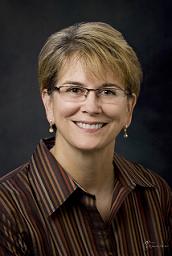Two physicians performing procedures in the outpatient setting and a surgery center director offer nine tips for improving operating room turnover time in ambulatory surgery centers.
1. Streamline patient intake and throughput. Turnover time, though central to the operating room, does not begin there. "The key is getting the patient to the intake area in a timely fashion and making sure the flow out of the operating room to the recovery room is continuous," says gastroenterologist Larry Good, MD.
Surgery centers need to have in place a system for organizing and preparing paperwork. The quicker bureaucratic tasks are finished, such as paperwork, the more efficiently patients can be expedited to and from the OR. Consider online registration to eliminate some of the manual paperwork. "All of the information can be at the scheduler's fingertips," says Dr. Good.
 2. Ensure that physicians arrive on time. While an ASC's staff is certainly integral to making sure things run smoothly to and from the operating room, there is little that can be done for turnover time if physicians do not arrive on time, prepared to perform the day's cases. In fact, late physicians can create an attitude that affects the whole turnover process. "If employees know that a physician is routinely late, it makes them drag their heels as well. Arriving early for cases requiring blocks is especially important. A surgeon cannot blame a late start on the staff if they arrive late," says Barbara Bergin, MD, founding member of Texas Orthopedics, Sports and Rehabilitation Associates in Austin.
2. Ensure that physicians arrive on time. While an ASC's staff is certainly integral to making sure things run smoothly to and from the operating room, there is little that can be done for turnover time if physicians do not arrive on time, prepared to perform the day's cases. In fact, late physicians can create an attitude that affects the whole turnover process. "If employees know that a physician is routinely late, it makes them drag their heels as well. Arriving early for cases requiring blocks is especially important. A surgeon cannot blame a late start on the staff if they arrive late," says Barbara Bergin, MD, founding member of Texas Orthopedics, Sports and Rehabilitation Associates in Austin.
3. Keep an open line of communication throughout the center. The key to streamlining any process in a surgery center is through making all expectations clear. For example, if everyone understands the turnover process completely, everyone can work toward the same goals. "This process should be clearly explained during the hiring process. I have found that once an organized and smooth system is in place, the staff and physicians will be happy," says Robert Knox, RN, director of Texas Orthopedics Surgery Center.
Preparation goes hand in hand with communication. An ASC staff should always be able to share with one another and the center's physicians what they will be doing and when. "The staff should check their schedule several days ahead. They should know what equipment needs to go where ahead of time. They also need to regularly communicate with anesthesiology," says Dr. Good.
4. Create a culture of positive reinforcement. One the best ways to keep the turnover process running like a well-oiled machine is to create an atmosphere that rewards a job well done. "Keep a happy attitude. Buy lunch once in awhile for the employees. The anesthesiologists take advantage of that too. I think that makes them enjoy working at the surgery center," says Dr. Bergin. "The entire staff responds well to the positive atmosphere, as opposed to an antagonistic environment."
5. Listen to what physicians are saying. Physicians are essential to maintaining efficient turnover times and it is this smooth turnover time that keeps physicians consistently returning to the center. ASC leaders should always listen when physicians have suggestions on how to improve turnover time or how to make their experience better. "Administration MUST make sure that a short, but safe turnover time is paramount to the happiness of the surgeons. If physicians complain, administration should make absolutely certain that it is addressed and keep track of the numbers," says Dr. Bergin.
 6. Streamline the center's inventory. Disorganization is a stumbling block for any efficiency initiative. ASC leaders should take a step back and look at the big picture. "Analyze the layout of your center and organize the flow so that you work smarter and not harder. Utilize tall slender stainless steel case carts, which take up a smaller footprint, in order to store next day cases. Organize these cases in plastic bins in the order of the schedule. Centralize supplies so that pulling cases and monthly inventory is easier," says Mr. Knox. "Streamline implants, supplies, draping of the patient and discharge instructions. Everyone gets together and sets guidelines and preferences on how we do specific cases. The more specialty equipment and supplies staff have to gather and swap out, the longer it takes to turn a room around."
6. Streamline the center's inventory. Disorganization is a stumbling block for any efficiency initiative. ASC leaders should take a step back and look at the big picture. "Analyze the layout of your center and organize the flow so that you work smarter and not harder. Utilize tall slender stainless steel case carts, which take up a smaller footprint, in order to store next day cases. Organize these cases in plastic bins in the order of the schedule. Centralize supplies so that pulling cases and monthly inventory is easier," says Mr. Knox. "Streamline implants, supplies, draping of the patient and discharge instructions. Everyone gets together and sets guidelines and preferences on how we do specific cases. The more specialty equipment and supplies staff have to gather and swap out, the longer it takes to turn a room around."
7. Create a case scheduling strategy. Turnover time is dependent on the nature of the cases being performed in the operating room. "For gastroenterology cases, you can easily turn around a room in 15 minutes. If you are doing a complicated case, turnover can take up to 45 minutes," says Dr. Good. ASC leaders should be aware of the affect case variation has on turnover time and create a strategy accordingly.
At the Texas Orthopedics, Sports and Rehabilitation Associates surgery center, there a number of things done to facilitate the variation in cases. "When possible, we schedule long complicated cases, and/or higher ASA patients, at the beginning of the day," says Mr. Knox. "If there is a gap in the schedule for one of the operating rooms teams we will set up the surgeon's next case in another operating room. 'Flip flopping' rooms often helps with turnover time."
8. Involve everyone in the turnover process. A quick turnover time is not the responsibility of one or two people at ASC, but of everyone. "No one should be sitting around when a room is being turned over. In the ASC, all employees, no matter what their degree, are involved in the turnover process," says Dr. Bergin.
The turnover process can be facilitated by becoming a gradual process. "Clean up as you go. If there is time during the first case, to clean up, then by all means, start doing it," says Dr. Bergin. ASC staff can help clean or remove anything that is no longer needed in the OR.
When the procedure is complete, physicians can even lend a hand. "Train your anesthesia providers to turn over their own equipment and area," says Mr. Knox. Once made a routine, each small effort will combine to make a naturally swift turnover time.
9. Find the right balance between efficiency and safety. ASC administrators should strive to have a quick as possible turnover time, but never sacrifice the quality or safety of care. "Turnover time, anesthesia efficiency and complication and infection prevention all go hand in hand. If you start seeing increased infection and complications, the first thing you are going to ask is whether we doing things too fast," says Dr. Bergin. ASC leaders should find the turnover time that produces the quickest and safest results for their individual centers, as patient safety is always the number one priority.
More Articles on ASC Issues:
4 Ways to Avoid Common Surgery Center Financial Mistakes
6 Large Equipment Purchases for Surgery Centers Over the Next Year
Cut Costs Where it Counts: 5 Steps to Reduce ASC Staff Hours Per Patient

